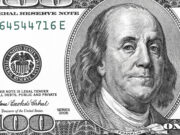As an avid observer and participant in this grand financial ballet, I’ve come to recognize a pattern, a rhythm, if you will, in the interplay of Federal Reserve rate hikes and cuts. This understanding is crucial, especially as we navigate the tumultuous waters of 2023 and look towards 2024.
The windows of opportunity that open between the Federal Reserve’s last rate hike and the subsequent rate cut. History has a tale to tell here. Analysis of past economic cycles reveals that the period following the cessation of rate hikes is often ripe with investment opportunities. To put it in numbers, in the year after the Fed stops hiking rates, we’ve seen asset classes like stocks, bonds, and balanced portfolios significantly outperform cash.
Case in Point: Learning from the Past
Take, for instance, the post-hike periods in the last four economic cycles. Each time, these intervals have heralded substantial gains for those invested in diverse asset classes, far surpassing the returns on cash holdings. Why is this important? Because it demonstrates a clear pattern – one that savvy investors can leverage. The lesson is straightforward: when the Fed halts its rate hikes, it’s often a signal to shift gears, to move away from the ultra-cautious stance that might have dominated your investment strategy during the height of rate increases.
Understanding when to pivot in your investment strategy is key. Historically, the first interest rate cut comes about 10 months after the final rate hike. This interval is not just a waiting game; it’s a golden period for recalibrating your portfolio. For instance, following the last rate hike in a cycle, equities often begin their upward trajectory well before the official rate cut. It’s about reading the signs, the subtle shifts in the economic landscape.
The Current Scenario
As we stand in 2023, the Fed’s stance is gradually becoming more apparent. While projections hinted at one more rate hike before the year’s end, it’s becoming increasingly clear that we are nearing the end of this hiking cycle. What does this mean for you, the investor? Now is the time to prepare, to position your assets in anticipation of the change. It’s not about rushing in headfirst but about making calculated, strategic moves.
The transition period between rate hikes and cuts is not just about playing defense; it’s an offensive play. Diversifying into stocks and balanced portfolios can be a wise move. For those looking at bonds, this period often presents attractive entry points as the market starts pricing in the anticipated rate cuts. Remember, while cash may feel safe, especially after a period of aggressive rate hikes, it’s often the least rewarding asset class in these transition phases.
One of the biggest challenges in capitalizing on this transitional phase is psychological. The market’s recent volatility can instill a sense of fear, prompting many to cling to cash. But history teaches us that fortune favors the bold – those who can look beyond the immediate turbulence to the emerging opportunities. It’s about balancing caution with calculated risk-taking.
Preparing for 2024: Eyes on the Horizon
As we edge closer to 2024, the landscape is set for a shift. Those who position themselves wisely during this transitional phase could see significant gains. This isn’t just speculation; it’s strategic positioning based on historical patterns and current market analysis.
The period between the Federal Reserve’s final rate hike and the subsequent rate cut is more than just an economic anomaly; it’s a window of opportunity. By understanding this cycle, aligning your investment strategy accordingly, and maintaining a balanced approach, you can turn what seems like a market limbo into a period of potential financial growth. Remember, in the world of investing, timing is everything, and now is the time to prepare, to pivot, and to profit.
Profit Opportunities
Profiting from Federal Reserve actions, particularly during the transition from rate hikes to rate cuts, involves several strategic approaches:
- Stock Market Investments: As equities often begin to rise in anticipation of rate cuts, investing in stocks or equity funds can be profitable.
- Bond Market Opportunities: The period leading to a rate cut can present favorable entry points in the bond market, as bond prices tend to rise when interest rates fall.
- Diversified Portfolios: Balancing your portfolio with a mix of stocks, bonds, and other asset classes can leverage the shifting market dynamics.
- Sector-Specific Investments: Certain sectors may benefit more from the Fed’s policy changes. Identifying and investing in these sectors can yield higher returns.
- Real Estate Investments: If the Fed’s actions lead to lower mortgage rates, it could be an opportune time to invest in real estate or real estate investment trusts (REITs).
- Currency Trading: Fed actions can significantly impact currency values. Forex trading or currency-focused ETFs might be profitable for those knowledgeable in this area.
- Interest Rate Sensitive Stocks: Investing in stocks of companies that are particularly sensitive to interest rate changes, such as financials, can be beneficial.
- Timing the Market: Although risky, some investors try to time the market based on anticipated Fed actions, buying assets when they’re undervalued and selling when they peak.
Remember, while these strategies can offer opportunities for profit, they also carry risks. It’s crucial to conduct thorough research and consider your risk tolerance and investment goals before making any decisions.











